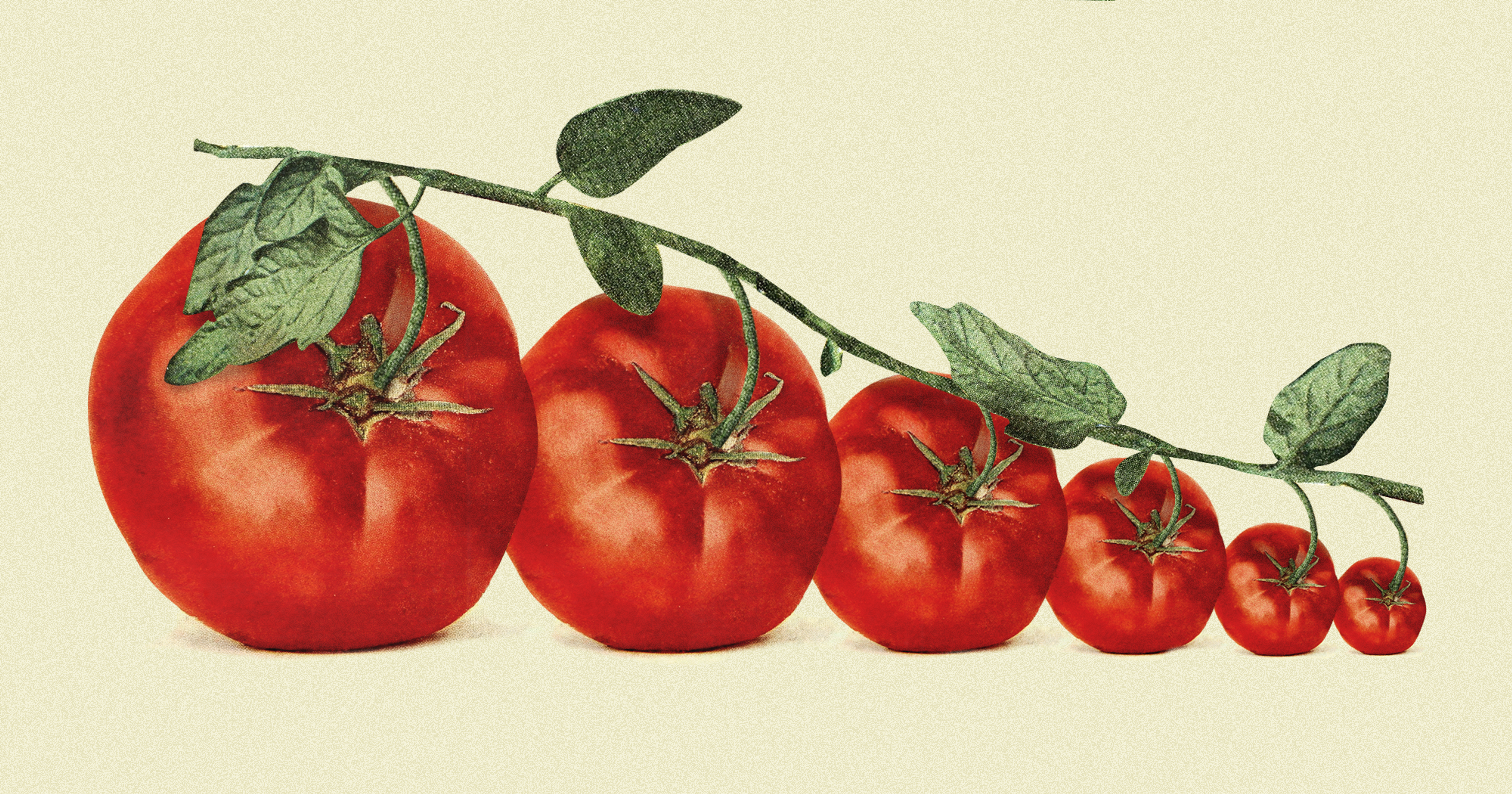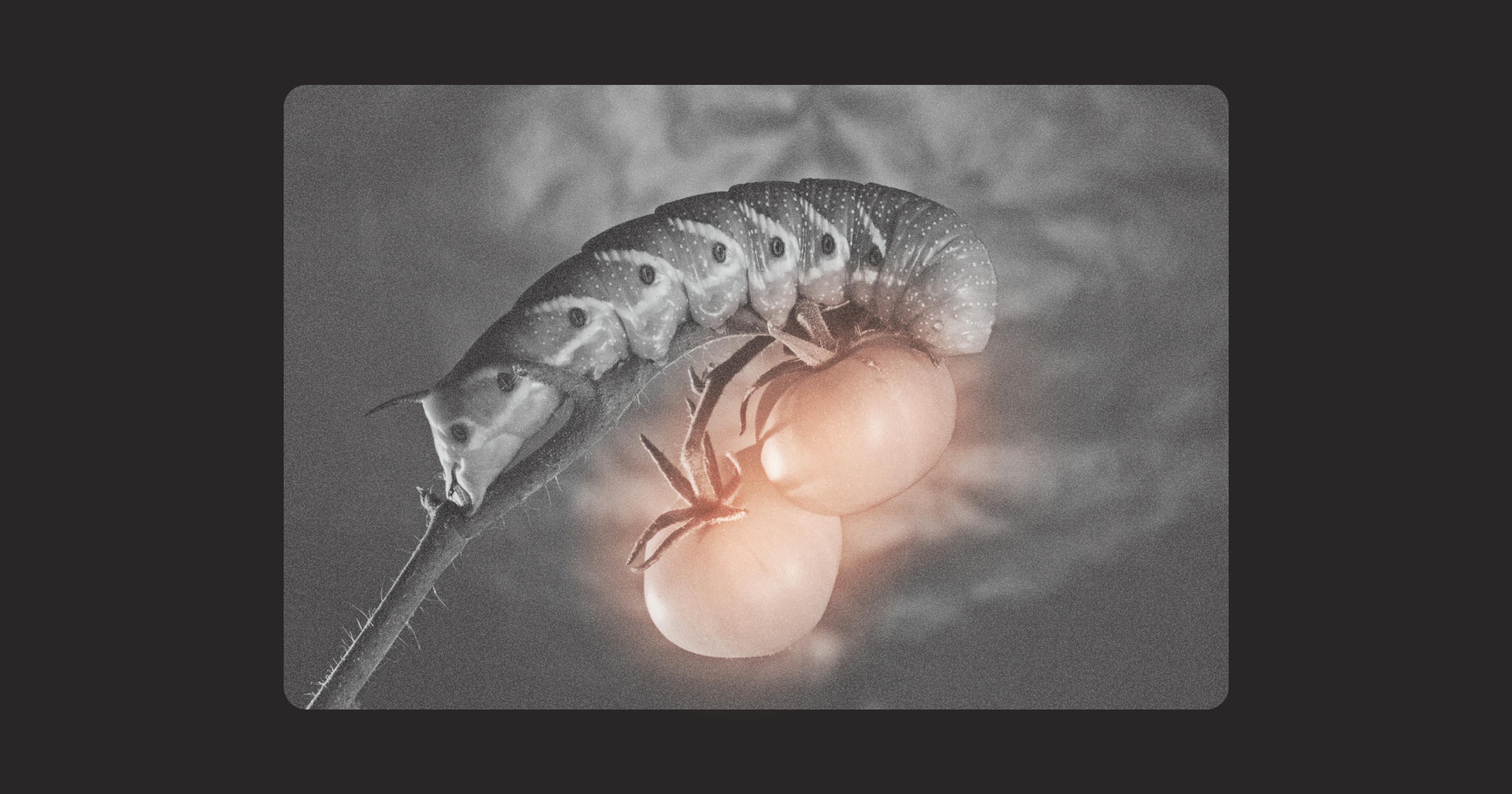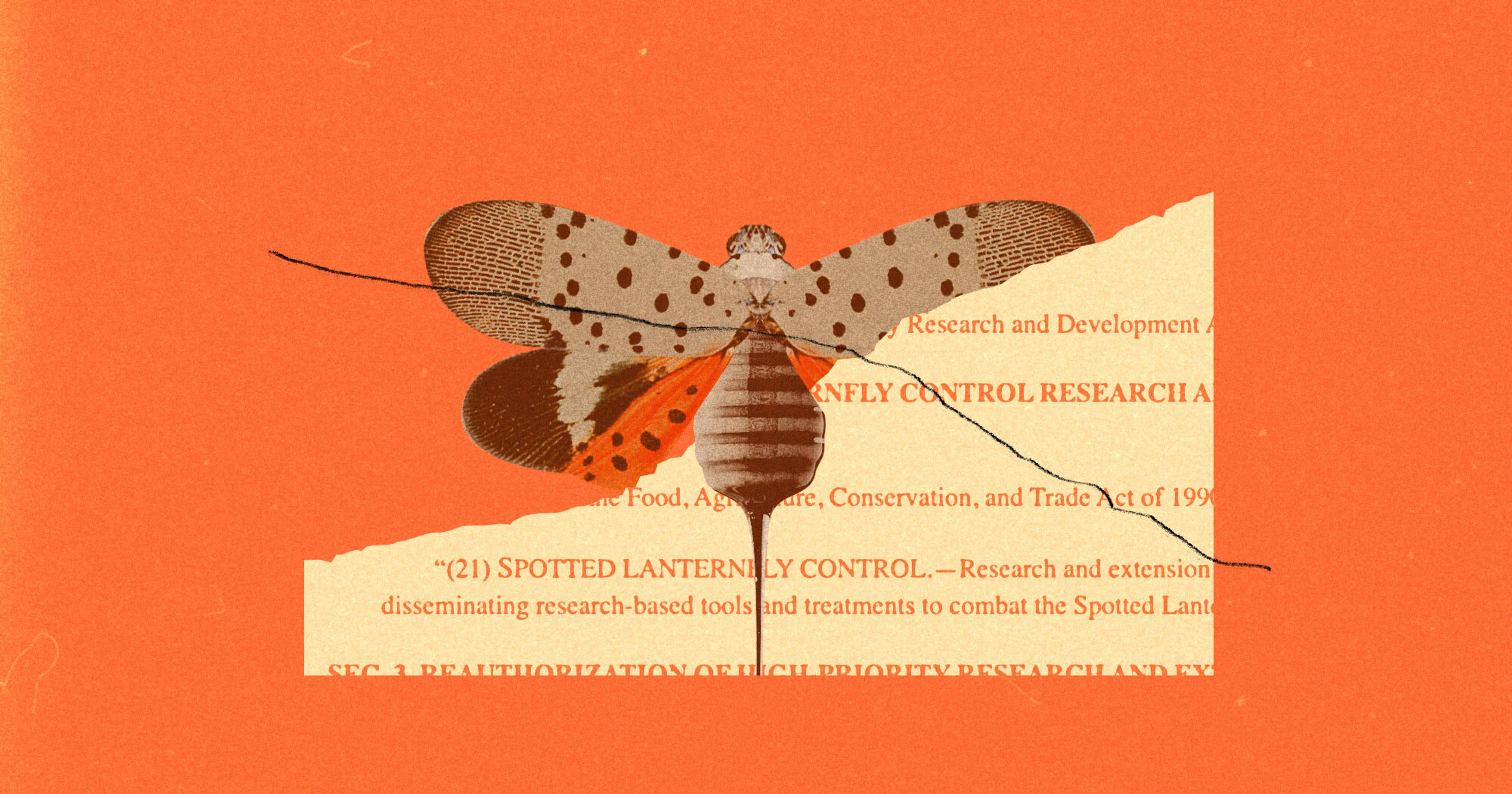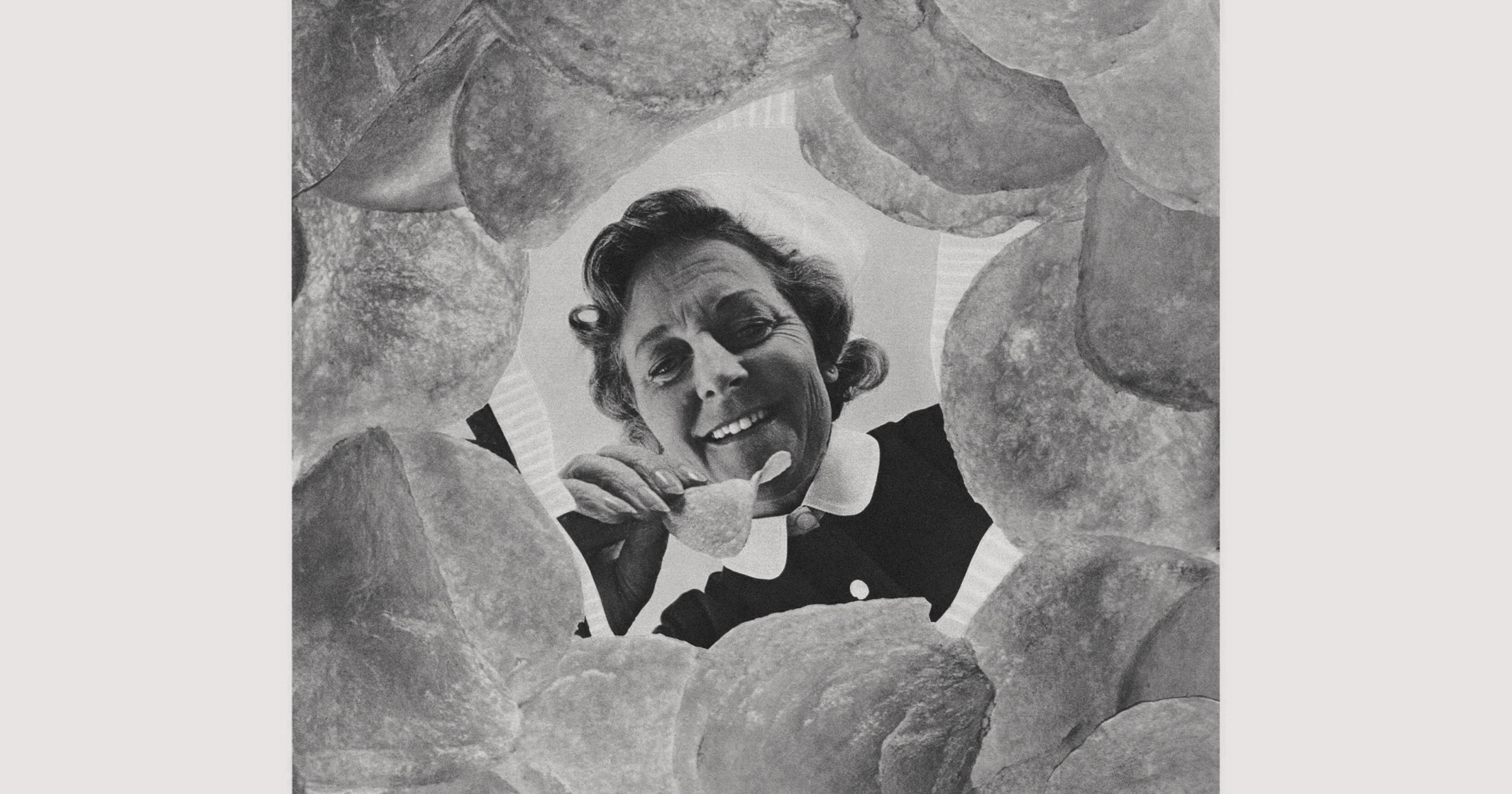Scientists are trying to bring flavor back to the tomatoes sold in grocery stores. But how should they taste, exactly?
Lew DePietro doesn’t remember how, exactly, his family’s produce farm in southern New Jersey started growing heirloom tomatoes — maybe some of the seeds got mixed into their order by accident or maybe his late stepfather had ordered some seeds to try them out — but the heirlooms would show up in their harvest.
“We used to do probably 20 acres of tomatoes,” he said. “And we would get maybe a couple of baskets of these bright pink tomatoes.”
At the time, DePietro said, nobody was really growing heirlooms. South Jersey had become synonymous with tomato farms in the 20th century as the Campbell’s company, headquartered in Camden, boosted the local industry and the development of new commercial tomato varieties like the Rutgers tomato. Tthat’s mostly what the family grew: commercial varieties. But DePietro sold these odd, pink tomatoes at their farmer’s market stand nonetheless, and customers took notice.
“There were certain people that just loved them, and they said ‘You got any more of them pink tomatoes?’” he said. But despite their robust flavor, DePietro’s stepfather didn’t want to grow the heirloom tomatoes — they were too fragile to pack and ship out.
In the mid-20th century, as the food supply chain industrialized, horticulturalists started developing tomato varieties to fit that supply chain — meaning sturdier, more uniformly round and red fruits, grown on plants with higher yields and greater disease-resistance, said Denise Tieman, a tomato horticulturist at the University of Florida.
Over time, these efforts were successful, and Tieman pointed out that without these advances, we wouldn’t have tomatoes in the grocery store for the low prices we’ve grown used to. Yet in selecting for the features that made tomatoes easier to grow and sell, horticulturalists let another feature fall by the wayside: flavor.
Now, tomato scientists are trying to develop a best of both worlds scenario to supply commercial and flavorful tomatoes across the country, year-round. But when it comes to creating an “ideal tomato,” science may only be part of the equation.
No one ever set out to make tomatoes bland. But over the past few hundred years, the fruit has changed significantly. Wild tomatoes, native to western South America, grow small berries and were eaten by Indigenous Americans thousands of years ago. After Europeans arrived, they brought these tomatoes back home with them, though rarely ate them, out of fear that they were poisonous. Yet slowly, Europeans started incorporating tomatoes into their diets, and with that came the development of the varieties we now call heirlooms.
Today these heirlooms are often prized for their flavor, compared with the relatively bland newer varieties now sold widely in grocery stores. But in addition to being more finicky, heirlooms can grow in strange or imperfect shapes and colors, which can be a turnoff for some customers who are used to buying picture-perfect red spheres.
Many current research efforts are trying to keep all of the new features that made the new tomatoes commercially viable and visually appealing, while restoring some of the flavor typical of many heirloom varieties. And flavor, said Jay Scott, an emeritus tomato breeder at the University of Florida, basically comes down to just three things — sugar, acids, and aromatic volatiles.
Some people like much sweeter tomatoes while others like less sweet tomatoes — no one tomato variety will ever be a “perfect” tomato to everyone.
That’s not to say scientists can just flip a few switches and pump up the flavor. Sugar, acid, and aromatic content may be determined by a host of different genes, making “flavor” a nebulous and slippery trait to account for. We know what some of those genes are — a 2017 paper co-authored by Tieman, for example, catalogued the chemistry and genetics of nearly 400 varieties of tomatoes to determine some of the specific genes that account for good flavor. But finding the right combination of those genes to make a real-life tomato that tastes great is harder than it sounds.
When you cross two plants to try and select for traits that you like, you form a whole new combination of genes, which might end up tasting good, or might not, though new gene editing techniques could speed up that process. Tieman also pointed out that different people like different types of tomato flavors — some people like much sweeter tomatoes while others don’t. No one tomato variety will ever be a “perfect” tomato to everyone.
But providing any flavor profile might be better than having little to no taste at all. And tomato varieties that check many of the boxes you’d need for a commercially viable, extra-tasty tomato do pop up now and then. In the 2000s, for example, Scott developed the original Tasti-Lee variety, which grew sweet, firm, bright-red fruits, and was heavily marketed as a better-tasting tomato.
Tomato flavor isn’t solely defined by genetics, either — growing conditions can make a big difference. For example, tomatoes grown during longer, sunnier days will generally photosynthesize more sugars and acids, helping to boost their flavor, said Randy Gardner, an emeritus tomato horticulturist at North Carolina State University. In addition, tomatoes grown with less water will grow smaller fruits, which concentrates the sugars and acids in those fruits. On top of all that, different varieties can fare better or worse in different climates, meaning a sturdy, tasty Florida tomato may not be a sturdy, tasty New Jersey tomato.
The thinking among many tomato scientists is that success is a matter of degrees — growing a genetically flavorful tomato in less-than-ideal conditions will probably still result in a tastier fruit than a genetically bland tomato grown in those same conditions. And with new varieties, we’ll likely get more tomatoes that can grow well and taste good to more people, in broader climates.
“Was the tomato that good? Or was it just the good time you were having at grandpa and grandma’s house?”
But there’s one factor of the growing process that even genetics may struggle to overcome. Many commercial tomato farms pick the fruit right at the end of the green stage, maybe with a little pink showing, but well before it is fully ripe. This creates a sturdier fruit that can be packed, shipped, and sprayed with ethylene to ripen on schedule. But a lot of the tomato’s natural flavor is pumped into the fruits during the ripening process on the vine — meaning a picked-green tomato will likely never taste quite as good.
As a result, part of the original branding agreement for Tasti-Lee tomatoes involved a stipulation that farmers had to pick the fruits ripe, Scott said. But for many commercial growers, this simply isn’t an option when the time between picking and ending up on someone’s table could be weeks. In that sense, even if researchers do develop more tasty, commercially viable tomato varieties, the need to pick green may still leave grocery store consumers wanting more.
Don’t despair: Improving grocery store tomatoes is far from impossible. Distributing more locally could limit shipping times — and Tieman said that the spread of greenhouses could allow growers to let their fruits ripen longer on the vine and ship shorter distances. In addition, David Francis, a tomato researcher at Ohio State University, pointed out that many grocery stores now sell a wider variety of tomatoes than they did a few decades ago, due to improvements in genetics and production systems.
But to get an “ideal tomato,” many consumers may need to grow it themselves or pay a higher price for a specialty product. After his stepfather passed away, DePietro started regularly growing more heirloom varieties, like Old Germans and Purple Cherokees. He sells most of his tomatoes at farmer’s markets and farmstands, which allows him to pick the fruits vine-ripened.
Homegrown tomatoes are almost universally ripened on the vine, which definitely adds to their appeal. Yet those home gardens may be part of the tomato flavor equation in a more nebulous way, too. Suppose you have a memory of being a kid and eating a delicious tomato that your grandparents grew in the garden, Scott noted.
“What’s the memory of that tomato?” he asked. “Well, was the tomato that good? Or was it just the good time you were having at grandpa and grandma’s house?”










